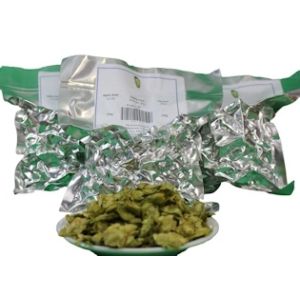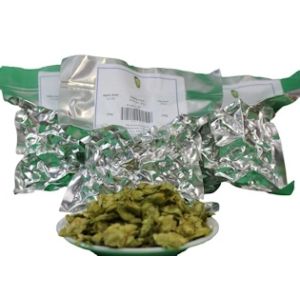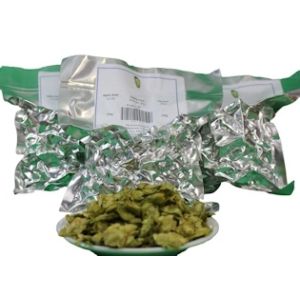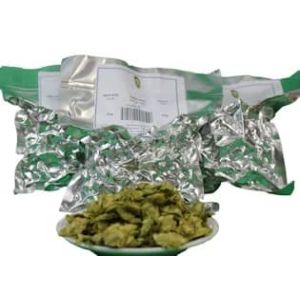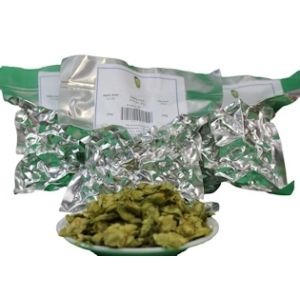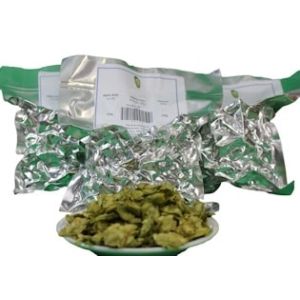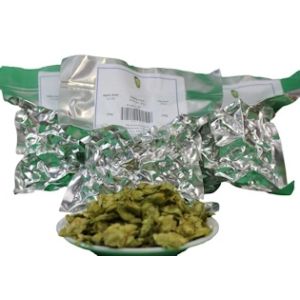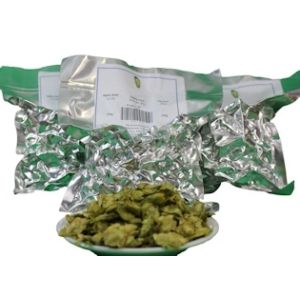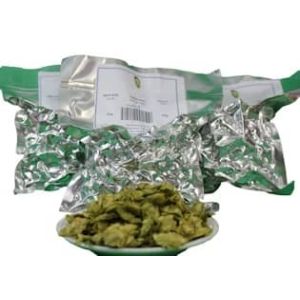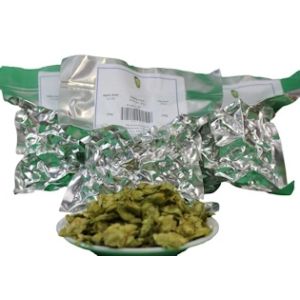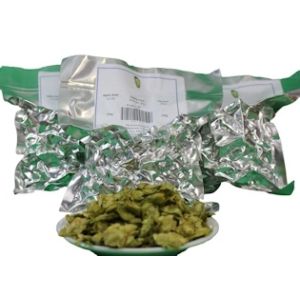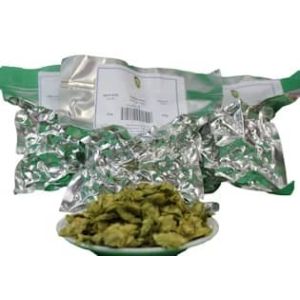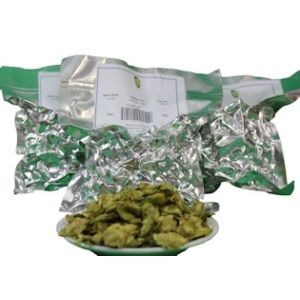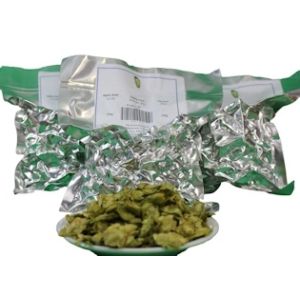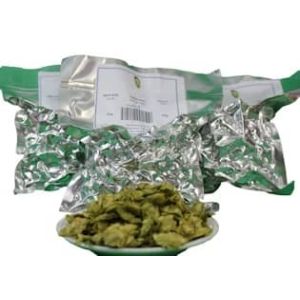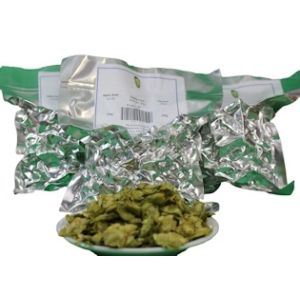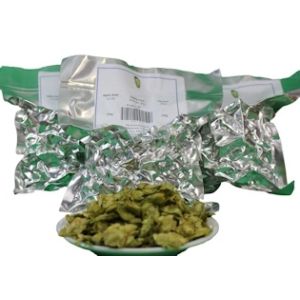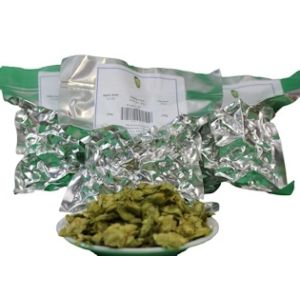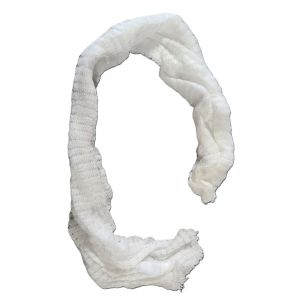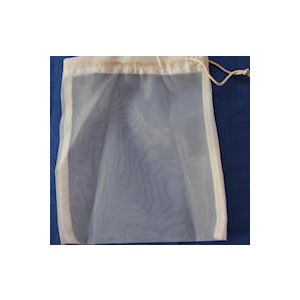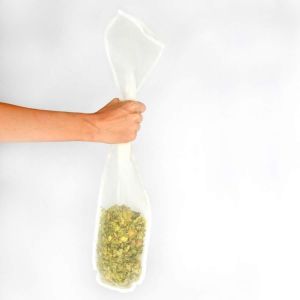Whole Leaf Hops
Whole Leaf Hops Vacuum Packed Range
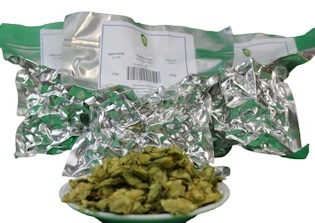
- Amarillo Hops 100g - Harvest 2022£6.36 £5.30
- Amarillo Whole Hops 454g | Artisan Hops£26.40 £22.00
- Aurora Hops 100g - Harvest 2022£3.90 £3.25
- Boadicea Hops 100g - Harvest 2022£3.78 £3.15
- Bobek Hops 100g - Harvest 2023£3.48 £2.90
-
- Brewers Gold Hops 100g - Harvest 2022£3.36 £2.80
-
- Cascade Whole Hops 454g | Artisan Hops£19.20 £16.00
- Centennial Hops 100g - Harvest 2021£6.18 £5.15
- Challenger Hops 100g - Harvest 2023£3.96 £3.30
-
- Citra Hops 100g - Harvest 2022 - Hops£7.68 £6.40
- Citra Whole Hops 454g | Yakima Chief Hops£30.48 £25.40
- Columbus Hops 100g - Harvest 2020£4.98 £4.15
-
-
- El Dorado Hops 100g - Harvest 2021£5.34 £4.45
- First Gold Hops 100g - Harvest 2022£4.14 £3.45
-
- Galaxy Hops 100g - Harvest 2022£8.88 £7.40
- Galena Hops 100g - Harvest 2021£5.52 £4.60
- Goldings Hops 100g - Harvest 2022£4.56 £3.80
- Green Bullet Hops 100g - Harvest 2021£4.92 £4.10
- Hallertauer Hersbrucker Hops 100g - Harvest 2023£3.96 £3.30
- Hallertauer Mittlefruh Hops 100g - Harvest 2022£4.56 £3.80
- Harlequin® Hops 100g - Harvest 2022£5.16 £4.30
- Hop Missile Inline Hop Infuser & Hop Back£114.00 £95.00
- HopBurst® Citrulicious 15ml Dry Hopping Oil£22.20 £18.50
- Jester® Hops 100g - Harvest 2021£4.98 £4.15
- Kohatu Hops 100g - Harvest 2023£6.36 £5.30
- Magnum Hops 100g - Harvest 2022 - Polish£3.36 £2.80
- Mandarina Bavaria Hops 100g - Harvest 2022£4.44 £3.70
- Mosaic Hops 100g - Harvest 2022£7.98 £6.65
- Motueka Hops 100g - Hop Harvest 2021£6.96 £5.80
- Mount Hood Hops 100g - Harvest 2021£5.76 £4.80
- Nelson Sauvin Hops 100g - Harvest 2021£7.50 £6.25
- Northdown Hops 100g - Harvest 2023£4.68 £3.90
- Northern Brewer Hops 100g - Harvest 2022£3.96 £3.30
- Olicana Hops 100g 2021£6.96 £5.80
- Perle Hops 100g - Harvest 2022£3.96 £3.30
- Progress Hops 100g - Harvest 2022£3.96 £3.30
- Saaz Hops 100g - Harvest 2023£5.46 £4.55
- Simcoe Hops 100g - Harvest:- 2022£7.98 £6.65
- Sorachi Ace Hops 100g - Harvest 2022£5.52 £4.60
- Styrian Goldings Hops 100g - Harvest 2022£4.20 £3.50
- Summit Hops 100g - Harvest 2022£5.40 £4.50
- Target Hops 100g - Harvest 2021£6.00 £5.00
- Tettnang Hops 100g - Harvest 2021£4.20 £3.50
- Williamette Hops 100g - Harvest 2021£5.76 £4.80
- HopBurst® Kentish Gold 15ml Dry Hopping Oil£18.48 £15.40
- HopBurst® Limonata 15ml Dry Hopping Oil£18.48 £15.40
- HopBurst® Super Citrus 15ml Dry Hopping Oil£18.48 £15.40
- HopBurst® Uncle Sam 15ml Dry Hopping Oil£18.48 £15.40
- Nylon Bag with Drawstring 20x20cm£3.60 £3.00
- Nylon Bag with Drawstring 24x24"£5.94 £4.95
-
- Muslin Hop Bag£0.54 £0.45
- Nylon Bag with Drawstring 8x15"£3.36 £2.80
- Nylon Hop Bag with Drawstring 8x9"£2.94 £2.45
- Hop Bag - 15 x 58 Cm£2.40 £2.00
- Stainless Hop Spider£18.00 £15.00
Leaf Hops: The Essential Guide to Home Brewing
Introduction to Leaf Hops
Leaf hops are integral to crafting a great beer, adding distinct flavours and aromas that can dramatically alter the character of the final product. Often overshadowed by their more modern counterpart, pellet hops, and leaf hops retain a traditional charm and offer a unique set of benefits for home brewers.
In this comprehensive guide, we'll explore the nuances of using leaf hops in home brewing, guiding you through every step of the way.
Understanding Leaf Hops
Leaf hops, sometimes referred to as whole hops, are the dried, unprocessed flowers of the hop plant. They are used primarily for adding bitterness, flavour, and aroma to beer. The beauty of leaf hops lies in their natural state, which many brewers believe contributes to a more rounded and subtle hop character in the beer.
The Brewing Process with Whole Leaf Hops
Brewing beer with leaf hops involves several steps. The brewing process begins with the preparation of the wort, which is the liquid extracted from the mashing process involving malted barley.
Hops are introduced to the wort at various stages during the boil, depending on the desired bitterness, flavour, and aroma. The alpha acids in hops, responsible for bitterness, are extracted during the boil, with longer boiling times increasing the bitterness.
Dry Hopping with Leaf Hops
Dry hopping, a method used in many hoppy beers, involves adding hops to the fermenter after the initial fermentation process. This technique is excellent for enhancing the aroma without adding additional bitterness. Leaf hops are particularly well-suited for dry hopping due to their larger surface area, which can impart more delicate aromas to the beer.
Equipment and Ingredients for Brewing with Leaf Hops
When brewing beer at home with leaf hops, you'll need some specific equipment and ingredients. The essentials include:
Bottling Bucket: A large container used for the final stage of the brewing process before bottling.
Wort Chiller: A device to rapidly cool the wort post-boil. An ice bath can also be used as a substitute.
Fermenter: A container where the wort is stored during the fermentation process.
Bottle Filler: A tool to transfer beer from the bottling bucket to individual bottles.
Yeast Starter: A pre-cultured yeast mixture to ensure a healthy fermentation process.
Malted Barley: The primary grain used in brewing, contributing to the beer's body and flavour.
Malt Extracts: Concentrated sugars from malted grains, used in extract brewing.
Priming Sugar: Sugar added just before bottling to carbonate the beer.
The Brewing Process: From Boil to Bottle
Preparing the Wort for Boil
The journey of making beer at home starts with preparing the wort. For all grain brewing, this involves steeping malted barley in hot water to extract sugars. In extract brewing, malt extracts are dissolved in water. This sweet liquid, the wort, is then brought to a boil.
Boiling the Wort with Hops
Boil is a critical stage in brewing. It's where you start to add hops to the wort. The timing of hop additions is crucial. Early additions contribute to bitterness, while late additions impart aroma and flavour. Leaf hops are ideal for this stage, as they release their oils slowly, contributing to a more nuanced taste.
Cooling and Transferring to the Fermenter
After the boil, the wort needs to be cooled as quickly as possible to a temperature suitable for yeast to thrive. A wort chiller is effective, but an ice bath can also be used. Once cool, the wort is transferred to the fermenter.
Fermentation: The Magic of Yeast
Fermentation is where yeast converts sugars into alcohol and carbon dioxide. This process can take anywhere from a few days to a few weeks. The type of yeast used, whether it's dry yeast or a liquid yeast starter, plays a significant role in the flavour and quality of the finished product.
Dry Hopping for Aroma
If you're aiming for a beer with a strong hop aroma, like in many unique beer styles, dry hopping is a great addition. Adding leaf hops to the fermenter during or after fermentation infuses delicate hop aromas into the beer without increasing its bitterness.
Bottling: The Final Step
After fermentation, the beer is almost ready. It's transferred to a bottling bucket, where priming sugar is added to aid carbonation. Then, using a bottle filler, the beer is filled into bottles, capped, and left to carbonate and age. This is a delicate process, and cleanliness is key to avoid any contamination.
The Rewards of Patience
The final step is, of course, enjoying the beer. The satisfaction of tasting a beer at home, crafted with your own hands, is unmatched. Each batch is a learning curve, and every bottled beer is a testament to your dedication and skill.
The Unique Qualities of Leaf Hops
Leaf hops offer a distinct experience in home brewing, not just in the final flavour and aroma of the beer, but throughout the brewing process. Let's explore what makes leaf hops special and how they contribute to the craft of brewing.
Natural State and Aroma Contribution
The most striking feature of leaf hops is their natural, unprocessed form. Unlike pellet hops, leaf hops are whole dried flowers of the hop plant. This natural form is believed by many brewers to contribute to a more balanced and less harsh bitterness in the beer.
Furthermore, the oils and resins, which impart aroma and flavour, are preserved in their most natural state, leading to a more complex and subtle hop character.
Versatility in Brewing
Leaf hops are versatile in their use. They can be added at any stage of the boil to manipulate the bitterness, flavour, and aroma of the beer. When used for dry hopping, their larger surface area allows for a more efficient infusion of aroma into the beer, making them a popular choice for brewers aiming to create beers with a pronounced hop nose.
Handling and Storage
Handling leaf hops requires a bit of care. They are more delicate than pellets and need to be stored properly to maintain their quality. Typically, they should be kept in a cool, dark place, preferably vacuum-sealed to prevent oxidation.
Proper storage ensures that the hops retain their essential oils and resins, which are crucial for imparting the desired characteristics to the beer.
Brewing Techniques with Leaf Hops
Boiling with Leaf Hops
When adding leaf hops to the boil, it's important to consider the timing. Early additions contribute to the bitterness, while late additions, closer to the end of the boil, help preserve the hop’s delicate flavours and aromas. The boiling time affects how much of the alpha acids (responsible for bitterness) are extracted.
Dry Hopping for Enhanced Aroma
Dry hopping with leaf hops is a popular technique to enhance the beer’s aroma. This involves adding hops to the fermenter post-fermentation. The large surface area of leaf hops makes them particularly effective at imparting aromatic qualities without adding additional bitterness.
Filtering Challenges
One challenge with using leaf hops is the need for effective filtering. After the boil, before transferring the wort to the fermenter, it's crucial to remove the hop leaves to prevent them from imparting excessive bitterness or clogging the fermenting equipment.
Advanced Tips for Brewing with Leaf Hops
Brewing with leaf hops can be a deeply rewarding experience, but it also comes with its own set of challenges and nuances. Here are some advanced tips to help you master the art of brewing with leaf hops and create truly amazing beer.
Mastering Hop Additions
Understanding the timing and quantity of hop additions is crucial. Each variety of leaf hops has a different alpha acid content, which influences the bitterness they impart. Experimenting with different timings and quantities can help you fine-tune the bitterness, flavour, and aroma profiles of your beer.
Maximizing Flavour and Aroma
To maximize the flavour and aroma from leaf hops, consider the temperature at which they are added to the wort. Adding hops at lower temperatures can extract more delicate flavours and aromas, perfect for creating beer with a nuanced hop profile. This technique is particularly effective in styles where hop character is a focal point, like in hoppy beers.
Dealing with Sediment
Leaf hops can leave a significant amount of sediment in the wort. To address this, use a hop bag during the boil, which can be easily removed afterwards. This minimizes the amount of hop material transferred to the fermenter, leading to a clearer beer.
Balancing Hops with Malt
When using leaf hops, it's important to balance their flavours with the malt profile of the beer. Selecting the right malted barley or malt extracts that complement the hop variety can enhance the overall taste and aroma of the beer.
The Role of Yeast
The yeast strain chosen can greatly impact the final character of the beer. Some yeast strains can emphasize the hop aroma and bitterness, while others might add their own flavour complexities. Matching the yeast to the hop profile is key to creating a harmonious brew.
Utilizing a Wort Chiller
Rapid cooling of the wort post-boil is crucial, especially when brewing with leaf hops. A wort chiller is more efficient than an ice bath and helps prevent the development of unwanted flavours caused by prolonged exposure to heat.
Perfecting the Fermentation Process
Fermentation temperature control is vital. Different yeast strains work best at specific temperatures. Maintaining the right temperature ensures a healthy fermentation process and can bring out the best in both the hops and the yeast.
Experimentation and Patience
Finally, experimentation is key. Each batch of beer is an opportunity to learn and refine your technique. Be patient and give your beer the time it needs to mature, as this can significantly impact the development of hop flavours and aromas.
Integrating Advanced Techniques into Your Brewing Routine
Brewing beer at home is both an art and a science. By incorporating advanced techniques into your brewing routine, especially when using leaf hops, you can elevate the quality of your homemade beer. Let's break down how to integrate these techniques into each stage of the brewing process.
Selecting Ingredients
- Choosing Leaf Hops: Research different hop varieties to understand their flavour profiles and alpha acid contents. This will help you select the right hops for the style of beer you're aiming to brew.
- Malted Barley and Malt Extracts: Choose malted barley or malt extracts that complement the hop profile. The balance between the malt sweetness and hop bitterness is crucial for a well-rounded beer.
Preparing for the Brew
- Yeast Starter: Prepare a yeast starter a few days before brewing. This ensures a robust fermentation process and can impact the final flavour profile of your beer.
- Equipment Setup: Ensure your equipment, especially the wort chiller and fermenter, is clean and ready for use. This helps in maintaining the quality and purity of your beer.
Brewing Day
Boil Process: Follow your recipe's guidelines for hop additions. Remember, the timing of additions affects bitterness, flavour, and aroma. Use a hop bag for easy removal of hops after the boil.
Cooling the Wort: Use a wort chiller to rapidly cool the wort to the optimal temperature for yeast addition. This helps in preserving the delicate hop aromas and flavours.
Fermentation
Temperature Control: Keep the fermenter at the ideal temperature for your yeast strain. This ensures a healthy fermentation process and influences the final flavour of your beer.
Dry Hopping: If your recipe calls for it, add leaf hops to the fermenter for dry hopping. This technique enhances the beer's aroma without adding extra bitterness.
Bottling
Priming Sugar: Add the right amount of priming sugar to the bottling bucket. This will carbonate your beer during bottle conditioning.
Bottling: Use a bottle filler for a smooth transfer of beer into bottles. This minimizes oxygen exposure and ensures consistent filling.
Aging and Enjoyment
Patience in Aging: Allow your beer to age in the bottles for the recommended time. This patience pays off in the development of flavours and aromas.
Tasting: Finally, enjoy the fruits of your labour. Each batch is a learning experience, contributing to your growth as a home brewer.
Incorporating these advanced techniques into your brewing process, especially when using leaf hops, can significantly improve the quality of your homebrew. Remember, brewing is a journey of continuous learning and experimentation. Each batch brings new insights and opportunities to refine your skills.

